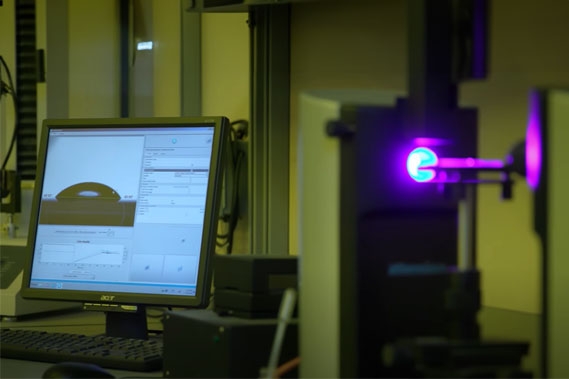Enhance the Bond Strength of Light-Curable Materials with Dyne Level Insights
In the realm of material science and engineering, particularly in fields that leverage adhesives for assembly or coating applications, the concept of dyne level plays a pivotal role. The dyne level, often expressed in dynes/cm (dyn/cm), is a measure of surface energy, with higher values indicative of a material's wettability. The more surface energy or higher the surface's dyne level, the better an adhesive has a chance to adhere to it. This metric is particularly significant in plastic fabrication and for design engineers tasked with ensuring the efficacy and durability of substrate bonds, especially when utilizing UV adhesives.
UV adhesives have rapid curing properties and formidable bond strengths. Nonetheless, the performance of these adhesives is intrinsically linked to the dyne level of the substrates to which they are applied. Ideally, a substrate should possess a dyne level higher than the surface tension of the adhesive to facilitate optimal wetting and adhesion. This is based on the principle that the adhesive can effectively "wet out" the surface, given a best chance to form a robust and homogeneous bond. In contrast, a substrate with a dyne level below the adhesive's surface tension may lead to suboptimal wetting, yielding weaker bonds and potential product failures. Dymax adhesive chemistries (polyurethane modified acrylates) are about 30-47 dynes.
The requirements for substrates are thus intimately connected to their dyne levels. Various materials, such as plastics, metals, and glass, exhibit distinct surface energy characteristics that can be altered or treated to achieve a specific dyne level. Techniques such as corona, flame, or plasma treatments can augment the dyne level of plastic substrates, rendering them more amenable to adhesion.
Quantifying a substrate's dyne level involves the application of test fluids with known surface tensions. By observing the interaction of these fluids with the substrate—whether they form beads or spread out—an approximation of the material's surface energy can be derived.
Dyne testing equipment is used to measure the contact angle of an adhesive
and calculate its surface energy.
Notably, specific substrates inherently possess dyne levels compatible with UV light-curing adhesives, coatings, and materials, negating the need for surface treatments. Examples of such substrates include certain types of clean glass and some metals like aluminum and stainless steel. These materials naturally exhibit high surface energy, making them conducive to complete wetting with UV-curing adhesives without additional treatments. However, it's crucial to note that the surface cleanliness of these substrates can significantly impact their effective dyne level, with contaminants potentially lowering the surface energy below the adhesive's requirements.
The dyne level is an essential parameter for design engineers, especially in UV adhesive applications. It influences not only the adhesive selection but also the requisite substrate treatments. A thorough comprehension and accurate measurement of dyne level are crucial for optimizing the adhesion process, ensuring that the resulting products meet the stringent standards of reliability and durability demanded in contemporary markets.

